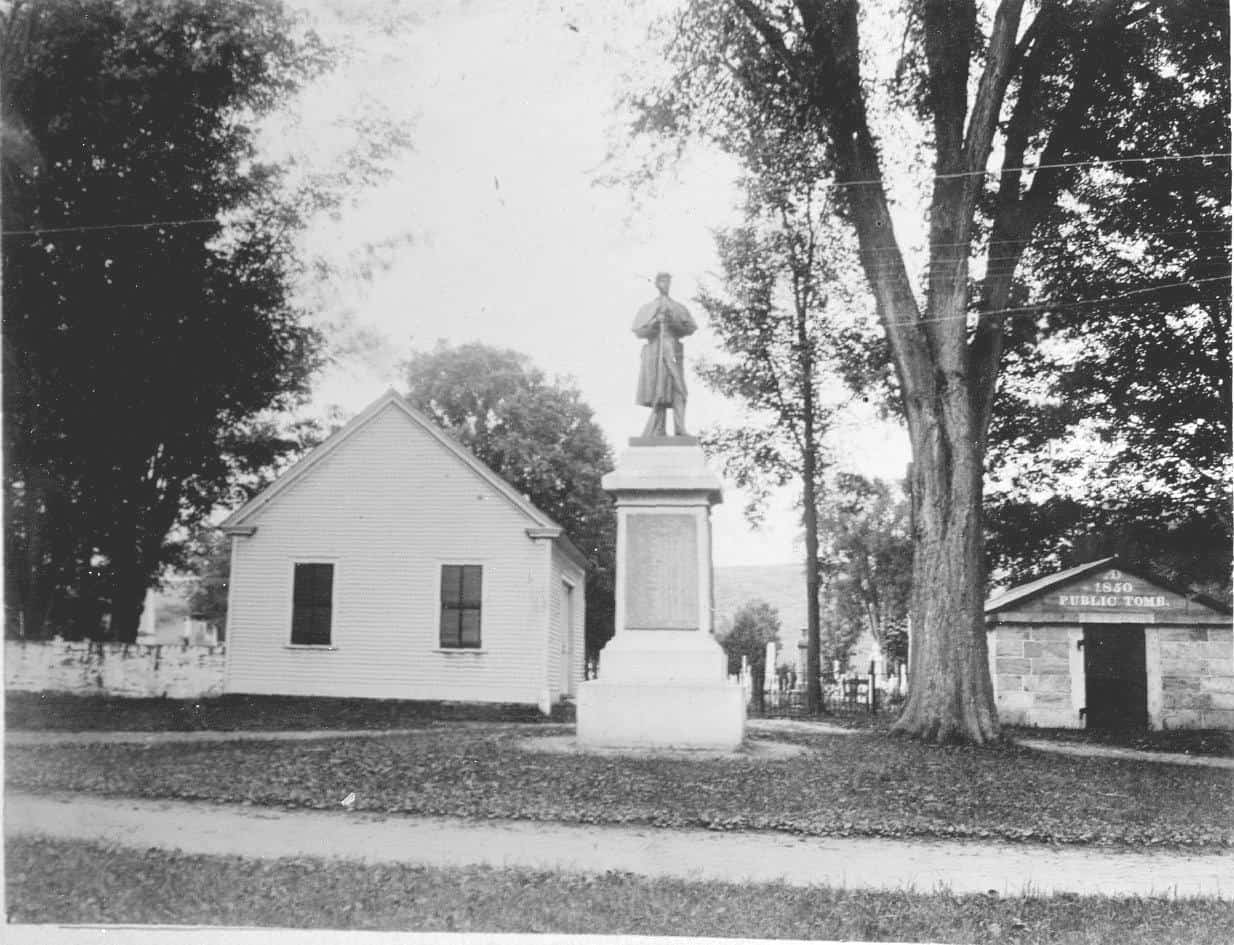
If there was just one photo of old Chester that everyone would recognize, this would be it. I have seen dozens of photos of this landmark, taken from many different angles, over many decades.
I was looking at the photo with this article and noticed something different. Go ahead and study the photo and see if you can spot what it is. Once you identify it, read on.
In this photo, you can see the Civil War monument, the Public Tomb, and the old wood-frame hearse house on the left. The cemetery is visible in the background, but where is the cannon?
While we refer to it as a cannon today, it’s really known as a Parrott gun, named for its inventor, Robert Parrott. Patented in 1861, it was an important piece of artillery for the Union during the Civil War.
I have a real photo postcard of this location that shows the gun and monument. That postcard is postmarked 1907. So, sometime before 1907, the gun was installed at this location. Read on.
I went down to look at our gun. In looking the gun over, I noticed it has U.S. Navy markings at the breech. It also has a series of numbers and letters that indicate the foundry of the gun and date of manufacture.
First, I’ll give a little ballistic data for the gun. It has 3.67-inch rifled bore and weighs 1,795 pounds. It required a two-pound powder charge, and accurately fired a 19-pound projectile 4,400 yards. This distance was covered in 17 seconds. A crew of up to seven was required to man the gun.
It was invented by Robert Parrott in 1860. Parrott was a West Point graduate and superintendent of the West Point Foundry. Cast iron barrels were prone to fractures and exploding when fired. Parrott solved this problem by wrapping the cast iron breech with a thick layer of wrought iron. This innovation not only solved the problem of fractures, but was an inexpensive alternative for the more expensive brass barrels.
Jim Bender, of The National Registry of Known Civil War Artillery, provided me with a lot of information. Jim is trying to document all of the existing Parrott guns in this country. Currently he has registered 5,755 guns. Our Chester gun has already been registered.
Chester’s gun was produced at the West Point Foundry in 1865. Because of its late date of manufacture, it didn’t see service in the Civil War. It became army surplus.
Parrott guns were used by the U.S. Army as well as the Navy. Army guns were mounted on a wooden carriage with wooden wheels, and drawn by horses. Navy guns were mounted on a wooden carriage, onboard ships. When used as a coastal defense, they were mounted on a base somewhat like what our Chester gun is mounted on today.
Even before the Civil War ended in 1865, several European countries as well as the U.S. were experimenting with breech-loading artillery. It wasn’t long before the breechloaders were perfected, which made these muzzleloaders obsolete.
An Act of Congress in the late 1800s made the obsolete guns available to the Grand Army of the Republic (GAR). This Act of Congress donated the Army guns to the GAR. The same Act of Congress loaned or donated the Navy guns to the GAR. Our gun is a Navy gun. It is unknown to me whether it was loaned or donated to Henry Post #27 GAR of Chester. In either case, it was installed at its current location in 1899.
In the 1990s, a Civil War museum in Pennsylvania tried to buy Chester’s Parrott gun. They offered the Town of Chester $10,000 for the gun. Thankfully, our town fathers declined this offer. Dave Walker of Chester was instrumental in making the case for the gun not to be sold.
This week’s old saying is from Winston Churchill: “Diplomacy is the art of telling people to go to hell in such a way that they ask for directions.”